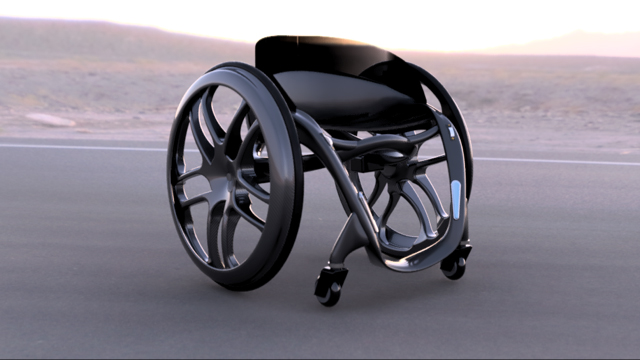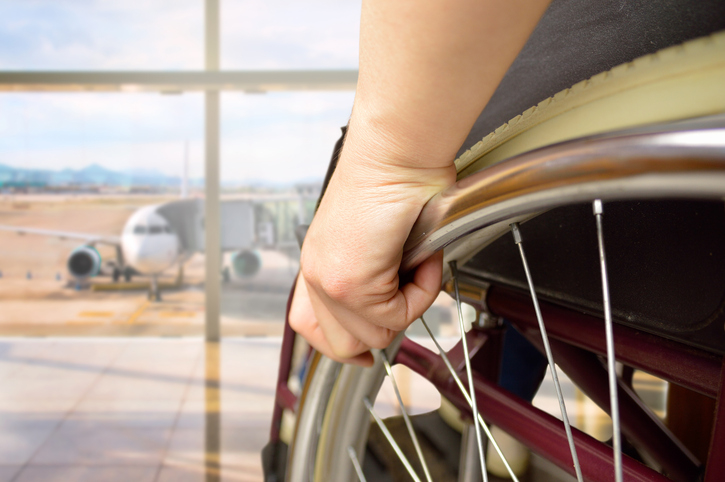Cleveland residents who have vision and mobility disabilities may have to wait a long time before things get better, according to reporter Mandy Kraynak of The Land. Read her story here.
transportation
Paratransit riders cite delays, service issues as RTA pledges improvements
Mandy Kraynak of The Land reports on how people with disabilities are having trouble accessing paratransit services in Cleveland. Read her story here.
NJ Transit plans to fix five stations for disability compliance. Here’s where and why
Journalist Colleen Wilson reports on how New Jersey will make five transit stations more accessible after over 200 violations were found. Read more
Why is Uber charging disabled people more?
Jodi Hausen writes about how Uber is charging people with disabilities more because of a wait time. Read more
How Can Electric Vehicles Help Drivers with Mental and Physical Conditions?
By Alex Channing
Giving people with physical and mental conditions easier access to our roads will go a long way to helping them live with autonomy and independence. There are many common disabilities that can affect driving, such as arthritis, neurological conditions, or impaired hearing or vision. Fortunately, technological advances are continuing to make it easier for disabled people to get behind the wheel.
Electric vehicles (EVs) are one such innovation which could help to reduce the gulf in driver numbers between non-disabled and disabled people. But how can an EV assist drivers who have pre-existing conditions? Here are three ways people with mental and physical conditions could benefit from making the switch to electric.
Quieter ride
With fewer moving parts and the absence of a combustion engine, EVs offer a far quieter ride than traditional cars. Whilst this alone may not have you rushing out to join the electric revolution, the reduced noise of an EV has actually been found to have many positive effects on the mental health of drivers.
A study carried out by researchers at the University of York analysed the brain activity of London taxi drivers when driving both diesel and electric black cabs. The study concluded that they were calmer, happier and more focused in the electric model. It was inferred that the quieter working environment contributed towards higher concentration levels in drivers, with fewer distractions allowing them to focus more on the roads.
Particularly for people who rely on getting into their cars every day for work or other commitments, the more peaceful conditions could go a long way to helping reduce some of the stresses associated with driving.
Convenience
It’s a common misconception amongst many drivers that petrol-power is always more convenient than electric when it comes to cars. But there are many arguments that dispute this belief. For example, most electric vehicles are automatic, meaning you won’t have to contend with a gear box or often even a traditional handbrake whilst driving. This can make for a safer and far more comfortable driving experience, particularly for people with joint pain.
What’s more, for people who suffer from physical impairments, but aren’t registered as disabled, an added benefit of EVs could be the designated electric car parking spaces which are often located in priority spots. In car parks with charging points, these bays will often be placed in a more convenient position, meaning less walking is required to and from your vehicle.
Charging
As it is, for many disabled drivers, ‘filling up’ an EV is far less strenuous than using a traditional petrol or diesel pump. Whereas using a fuel pump requires the strength to pull the trigger and hold it in place, you simply need to plug the charger into your EV to top it up, where it can be left unattended until fully charged. What’s more, having the freedom to fill up your EV from the comfort of home can help put your mind at ease, and means you can avoid busy petrol/charging stations.
Why Is Uber Charging Disabled People More?
As if there aren’t enough barriers for people using mobility devices or who have low vision to find appropriate transportation, those who can afford to use Uber’s ride-share service are being discriminated against. Read more here.
Amtrak Pays $2 Million to Passengers With Disabilities Who Faced Obstacles at Stations
Amtrak has paid more than $2 million to over 1,500 people with disabilities whom it discriminated against at nearly 80 train stations across the country. Read more here.
Arizona legislator Jennifer Longdon has to roll home following late-night budget talks
After a recent legislative session ended at 2 a.m., Rep. Jennifer Longdon, D-Phoenix, a wheelchair user and NCDJ board member, had no choice but to roll 1.5 miles home from the Capitol. Longdon’s difficulty getting home illustrates the lack of accessible public transit options in Phoenix. How can people who rely on public transportation be productive or work late, if needed, in a city that doesn’t have a 24-hour bus system?
Several colleagues and a police officer accompanied Longdon on her roll home, but, as Longdon pointed out, many people with disabilities wouldn’t be able to access the kind of help that she [as an elected state representative] could.
Click here to read more about this news story in the Arizona Republic.
Above: Rep. Jennifer Longdon thanks Phoenix police and tells her colleagues about her travails getting home on May 24, 2019. (Video: Robbie Sherwood / azcentral.com)
Toyota’s $4 million competition to re-invent the wheelchair

Toyota announced five finalists for its Mobility Unlimited Challenge at the 2019 Consumer Electronics Show (CES) in Las Vegas yesterday. Launched in 2017, the Mobility Unlimited Challenge is a contest that invites engineers, inventors, and designers from around the world to rethink the conventional wheelchair and develop a new way for people with lower-limb paralysis to get around. Each of the finalists will receive a grant of $500,000 to develop their concept further, with the final winner receiving $1 million in Tokyo in 2020.
Click here to read more about the competition online, or click here to download a PDF file of Toyota’s press release.
New law requires airlines to disclose how many wheelchairs they break
Beginning in January 2019, airline passengers can search the U.S. Department of Transportation website to determine an airlines’ track record of handling wheelchairs and other mobility devices. A new law sponsored by U.S. Sen. Tammy Duckworth, D-Ill., requires air carriers to be more transparent, obliging them to provide monthly reports that are publicly accessible and which detail the number of wheelchairs, checked bags, and motorized scooters lost, broke, or mishandled during flights.
The law was actually passed two years ago, but the Department of Transportation delayed its implementation until Duckworth–a veteran and wheelchair user herself–urged U.S. Secretary of Transportation Elaine Chao to force airlines to make the data — which they already collect each month — available to the public.
Click here to access the article on the Chicago Tribune’s website.


